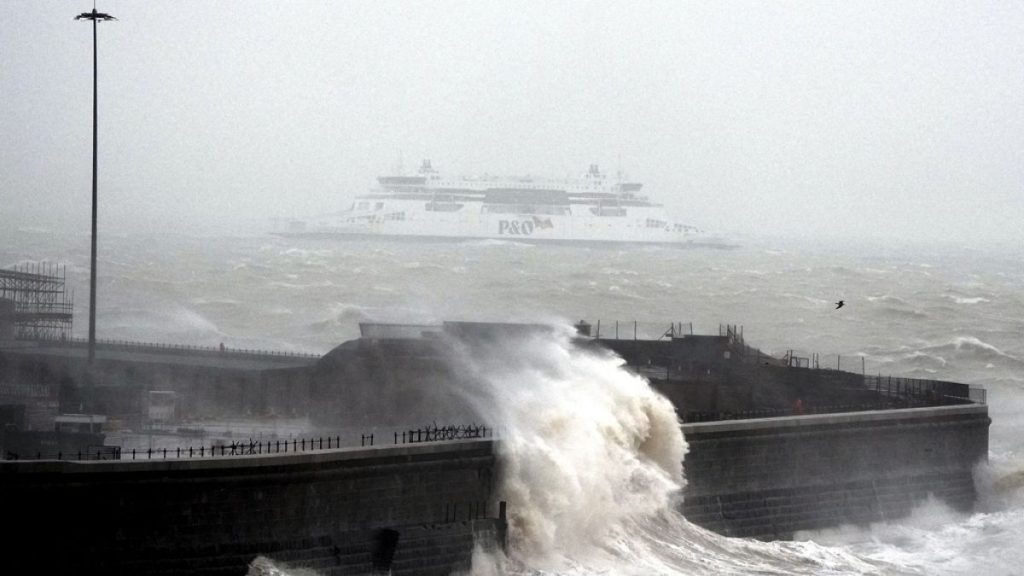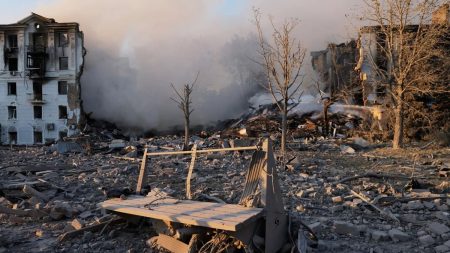The United Kingdom is bracing for a significant shift in weather patterns as the New Year commences, transitioning from heavy rainfall and flooding to a widespread cold snap characterized by ice and snow. The Meteorological Office, the UK’s national weather service, has issued a three-day yellow weather warning, covering a large portion of the country, anticipating disruptions and potential hazards due to the impending wintry conditions.
The initial phase of this weather shift manifested as heavy rainfall and strong winds across parts of the UK, particularly affecting New Year’s celebrations. Regions surrounding Manchester experienced significant flooding, leading to submerged homes, stranded vehicles, and the evacuation of residents. The severity of the flooding prompted authorities to declare a major incident, necessitating the deployment of mountain rescue teams to assist firefighters in responding to the widespread inundation. The volume of rainfall in just two days nearly equaled a typical month’s worth, overwhelming drainage systems and contributing to the rapid rise of river levels. Flood warnings were issued for over 150 communities, predominantly in northern England, highlighting the widespread impact of the heavy precipitation.
Following the deluge, a sharp drop in temperatures is expected to usher in a period of icy conditions and snowfall. Yellow weather warnings for ice have been issued for northeast Scotland, northwest England, and Northern Ireland, advising residents to anticipate travel delays and hazardous road conditions. The Met Office has also issued a more extensive snow warning covering most of England, southern Scotland, and all of Wales, predicting snowfall from Saturday through Monday morning. This widespread snow warning suggests a significant accumulation of snow, potentially disrupting travel and impacting daily life.
The anticipated snowfall is expected to be particularly heavy in northern England, with forecasts predicting accumulations ranging from 5cm to as much as 30cm in some areas. Such significant snowfall can lead to widespread travel disruptions, including road closures, flight cancellations, and delays in rail services. The heavy snow can also create hazardous driving conditions, increasing the risk of accidents and stranding motorists. Furthermore, the weight of the accumulated snow can damage infrastructure, potentially leading to power outages and disruptions to essential services. Residents in affected areas are advised to take precautions, such as stocking up on essential supplies, ensuring adequate heating, and avoiding unnecessary travel.
The combination of heavy snowfall and icy conditions poses a significant challenge to transportation networks and infrastructure. Road surfaces become treacherous, increasing the risk of accidents, while the accumulation of snow can obstruct roads and railways, leading to delays and cancellations. The weight of the snow can also damage power lines, leading to power outages and disrupting heating and other essential services. Furthermore, the cold temperatures can exacerbate existing health conditions, particularly among vulnerable populations. Authorities are urging residents to be prepared for the challenging conditions and to follow safety guidelines to minimize risks.
The rapid transition from heavy rainfall and flooding to a cold snap with widespread snow and ice underscores the dynamic and unpredictable nature of weather patterns. The UK’s experience serves as a reminder of the importance of preparedness and the need for robust infrastructure to mitigate the impacts of extreme weather events. The Meteorological Office’s warnings provide valuable information to help individuals and communities prepare for the challenges posed by the impending wintry conditions, minimizing potential risks and disruptions. The extent and duration of the snow and ice will ultimately determine the overall impact on the UK, and authorities are closely monitoring the situation to ensure the safety and well-being of residents.














